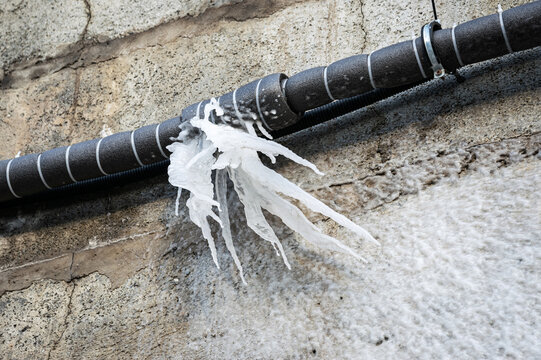Avoiding Frozen Plumbing in Winter: Critical Advice
Avoiding Frozen Plumbing in Winter: Critical Advice
Blog Article
In this article underneath you can discover a bunch of exceptional information concerning How To Avoid Freezing Pipes.

Cold weather can ruin your pipes, particularly by freezing pipes. Below's exactly how to stop it from happening and what to do if it does.
Introduction
As temperatures drop, the risk of frozen pipes increases, potentially leading to expensive repair work and water damages. Recognizing how to prevent frozen pipelines is vital for home owners in cool climates.
Prevention Tips
Protecting prone pipes
Wrap pipelines in insulation sleeves or utilize warm tape to safeguard them from freezing temperature levels. Focus on pipelines in unheated or outside locations of the home.
Home heating techniques
Maintain interior spaces adequately heated, especially areas with plumbing. Open up closet doors to allow cozy air to flow around pipes under sinks.
How to identify frozen pipes
Seek lowered water flow from taps, uncommon smells or sounds from pipelines, and visible frost on subjected pipelines.
Long-Term Solutions
Architectural changes
Think about rerouting pipelines far from outside walls or unheated areas. Add additional insulation to attics, cellars, and crawl spaces.
Updating insulation
Purchase premium insulation for pipes, attics, and wall surfaces. Correct insulation helps maintain constant temperatures and lowers the danger of frozen pipes.
Securing Exterior Pipes
Yard pipes and outside faucets
Separate and drain pipes garden hose pipes before winter months. Set up frost-proof spigots or cover outdoor faucets with shielded caps.
Recognizing Frozen Pipes
What triggers pipes to ice up?
Pipelines freeze when revealed to temperatures below 32 ° F (0 ° C) for prolonged durations. As water inside the pipelines freezes, it broadens, taxing the pipeline walls and potentially triggering them to rupture.
Dangers and problems
Icy pipelines can bring about supply of water interruptions, residential or commercial property damage, and expensive repair work. Burst pipes can flooding homes and create considerable architectural damages.
Indications of Frozen Water Lines
Determining frozen pipes early can stop them from bursting.
What to Do If Your Pipelines Freeze
Immediate actions to take
If you think frozen pipes, keep taps open up to ease pressure as the ice thaws. Utilize a hairdryer or towels taken in warm water to thaw pipes slowly.
Final thought
Stopping icy pipes requires positive procedures and fast reactions. By recognizing the reasons, signs, and safety nets, property owners can protect their pipes during winter.
5 Ways to Prevent Frozen Pipes
Drain Outdoor Faucets and Disconnect Hoses
First, close the shut-off valve that controls the flow of water in the pipe to your outdoor faucet. Then, head outside to disconnect and drain your hose and open the outdoor faucet to allow the water to completely drain out of the line. Turn off the faucet when done. Finally, head back to the shut-off valve and drain the remaining water inside the pipe into a bucket or container. Additionally, if you have a home irrigation system, you should consider hiring an expert to clear the system of water each year.
Insulate Pipes
One of the best and most cost-effective methods for preventing frozen water pipes is to wrap your pipes with insulation. This is especially important for areas in your home that aren’t exposed to heat, such as an attic. We suggest using foam sleeves, which can typically be found at your local hardware store.
Keep Heat Running at 65
Your pipes are located inside your walls, and the temperature there is much colder than the rest of the house. To prevent your pipes from freezing, The Insurance Information Institute suggests that you keep your home heated to at least 65 degrees, even when traveling. You may want to invest in smart devices that can keep an eye on the temperature in your home while you’re away.
Leave Water Dripping
Moving water — even a small trickle — can prevent ice from forming inside your pipes. When freezing temps are imminent, start a drip of water from all faucets that serve exposed pipes. Leaving a few faucets running will also help relieve pressure inside the pipes and help prevent a rupture if the water inside freezes.
Open Cupboard Doors
Warm your kitchen and bathroom pipes by opening cupboards and vanities. You should also leave your interior doors ajar to help warm air circulate evenly throughout your home.
:strip_icc()/snow-outdoor-faucet-pipes-4af65d1e5e904fb1aa7bf74071fe5d89.jpg)
We had been brought to that write-up on Prevent Frozen Pipes from an associate on our other web blog. So long as you appreciated our blog posting please make sure you remember to share it. We love your readership.
Book Services Report this page